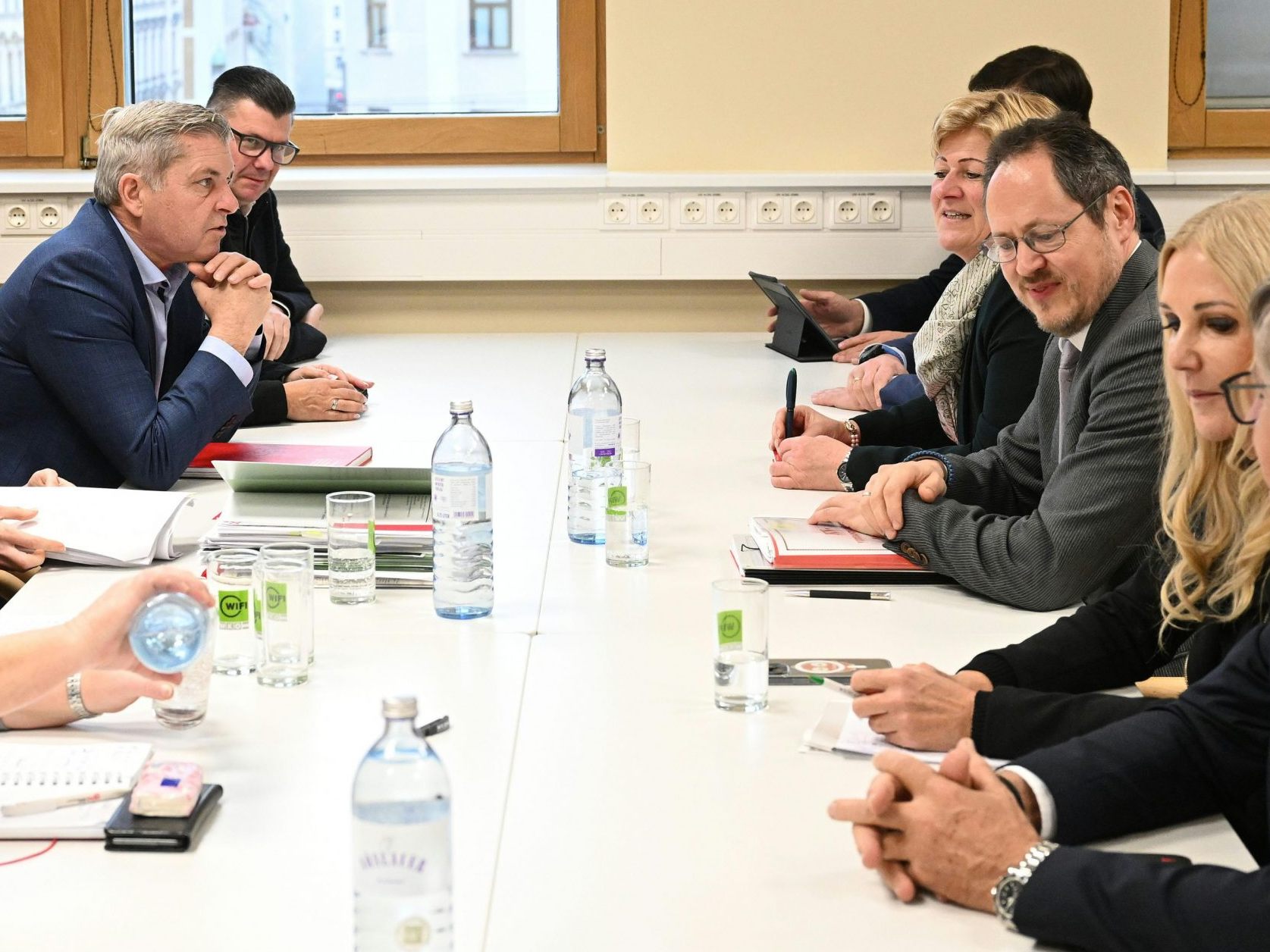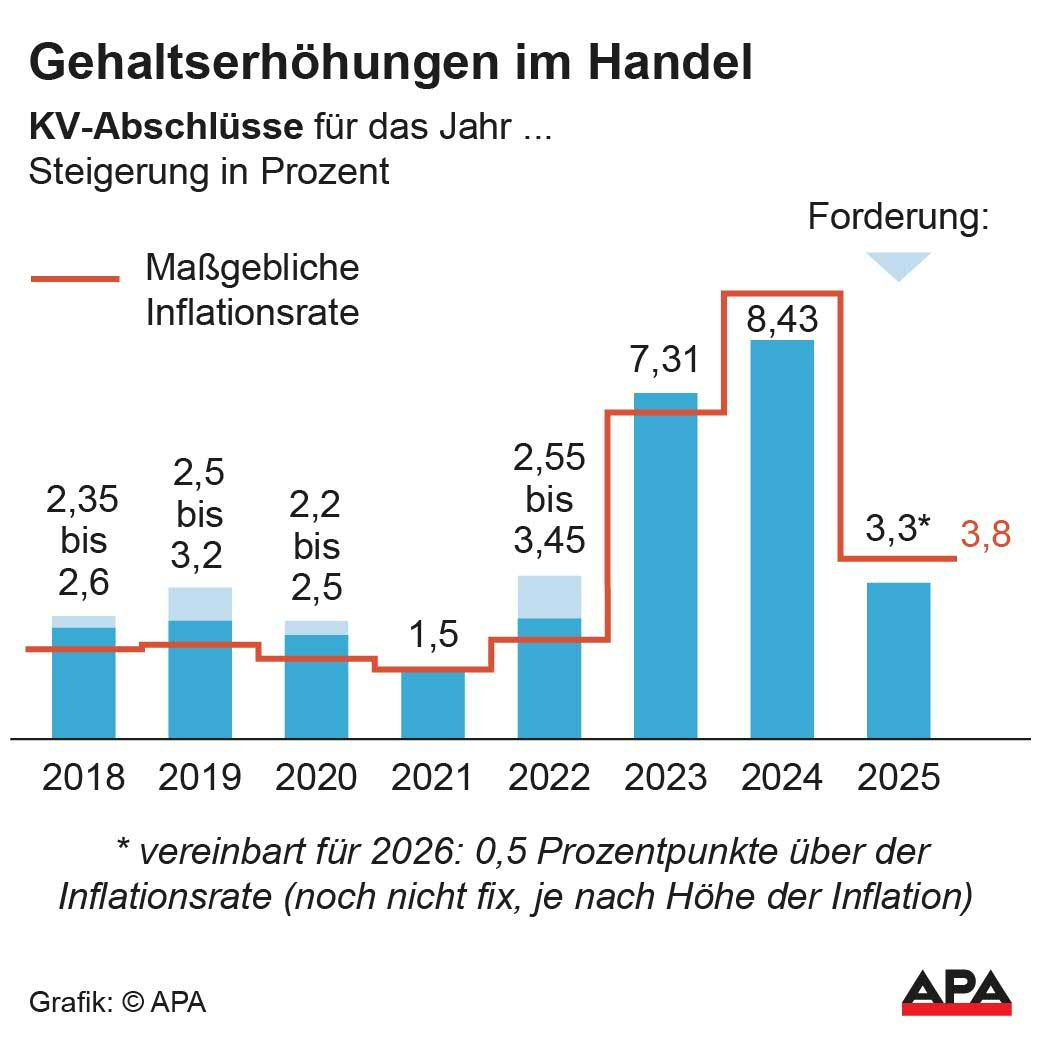Agreement on Trade Collective Agreement in Fifth Negotiation Round

Employees in the trade sector will receive a 3.3 percent increase in salary next year, and in 2026 there will be a 0.5 percent increase above the rolling inflation. However, the increase in 2026 decreases with rising inflation, if it is at 3 percent or above, the social partners want to sit down again. The apprenticeship remuneration will increase in the first year of training next year from 880 to 1,000 euros. Five rounds of talks were necessary for the agreement on Tuesday evening.
There are no changes to the framework law, such as free days. The fact that the conclusion in 2025 is below the rolling inflation of 3.8 percent is argued by the employee side with the fact that a salary increase above inflation is due in 2026. After the agreement, the employers pointed to the difficult situation in the industry.
Trade Collective Agreement Negotiations: Training Salary Increases
Negotiations for the approximately 415,000 employees and 15,000 apprentices in the trade sector started on October 23, when the GPA union still demanded a salary increase of 4.8 percent. The employers initially offered 2.8 percent more salary. The collective agreement (KV) 2025 for the 150,000 trade workers is currently still being negotiated.
It is currently not possible to say exactly how high the salary increase for trade employees will be in 2026, as the 0.5 percent salary increase only applies if there is rolling inflation in 2025 of up to 2.3 percent, if inflation is between 2.4 and 2.5 percent, the increase is 0.4 percent. If annual inflation is 2.9 percent, only the inflation rate is compensated.

If the rolling inflation in 2025 is three percent or above, negotiations will be resumed. Existing overpayments above the collective agreement salaries remain fully in force.
The apprenticeship incomes will increase to 1,000 euros in the first year of training in 2025, which means an increase of 14 percent. In the second, third and fourth year of training, there is an increase to 1,170, 1,480 and 1,540 euros. By the way, 35.5 percent of employees in the trade sector work less than the standard working hours, for women it is even 55.2 percent. After all, the trade sector is female, 63.3 percent of employees are women.
"Painful Compromises" for Agreement on Trade Collective Agreement
Both sides emphasized on Wednesday evening that "painful compromises" had been necessary and that there had been a good personal level in the talks. They now want to use this to talk about reform processes for future collective bargaining negotiations. The negotiators did not reveal their cards in more detail. The last double conclusion in the trade sector was in 2014. The collective agreement 2025/26 negotiated on Tuesday evening in Vienna applies from January 1 of the coming year.
After the agreement for the trade employees, Veronika Arnost, chief negotiator of the GPA union, said: "The conclusion made today is not a reason for us to celebrate excessively. However, due to the very difficult economic conditions, we have taken our responsibility and agreed to a compromise that offers the prospect of sustainable salary development."
Rainer Trefelik, chairman of the Federal Trade Division in the Austrian Economic Chamber (WKÖ), stated: "The crisis in the trade sector, which has been ongoing for several years, made it necessary for us to take new social partnership paths." He further stated: "These cost increases will be very challenging for many trade companies. But the two-year conclusion provides more planning security and ensures that costs do not completely get out of hand. And it allows us to initiate a reform process over the collective agreement."
The private trade association today spoke of a "tariff adjustment in trade at the upper end". "Now the full concentration must be on the Christmas business", said Rainer Will, managing director of the trade association. The double conclusion now also provides a time window to tackle important reforms in the framework law.
Collective Agreement Agreement Clearly Above Current Inflation Rate
However, in this year's autumn wage round, higher conclusions were achieved than today in the trade sector. The metal workers, who had agreed on a two-year collective agreement last year, are getting a gross 4.8 percent more. In the social economy, the increase is 4 percent, at the railways 4.1 percent and in the public service 3.5 percent.
The current inflation rate, according to a quick estimate by Statistics Austria for October, is 1.8 percent, compared to the previous month of September, the price level rose by 0.3 percent.
(APA/Red)
This article has been automatically translated, read the original article here.





